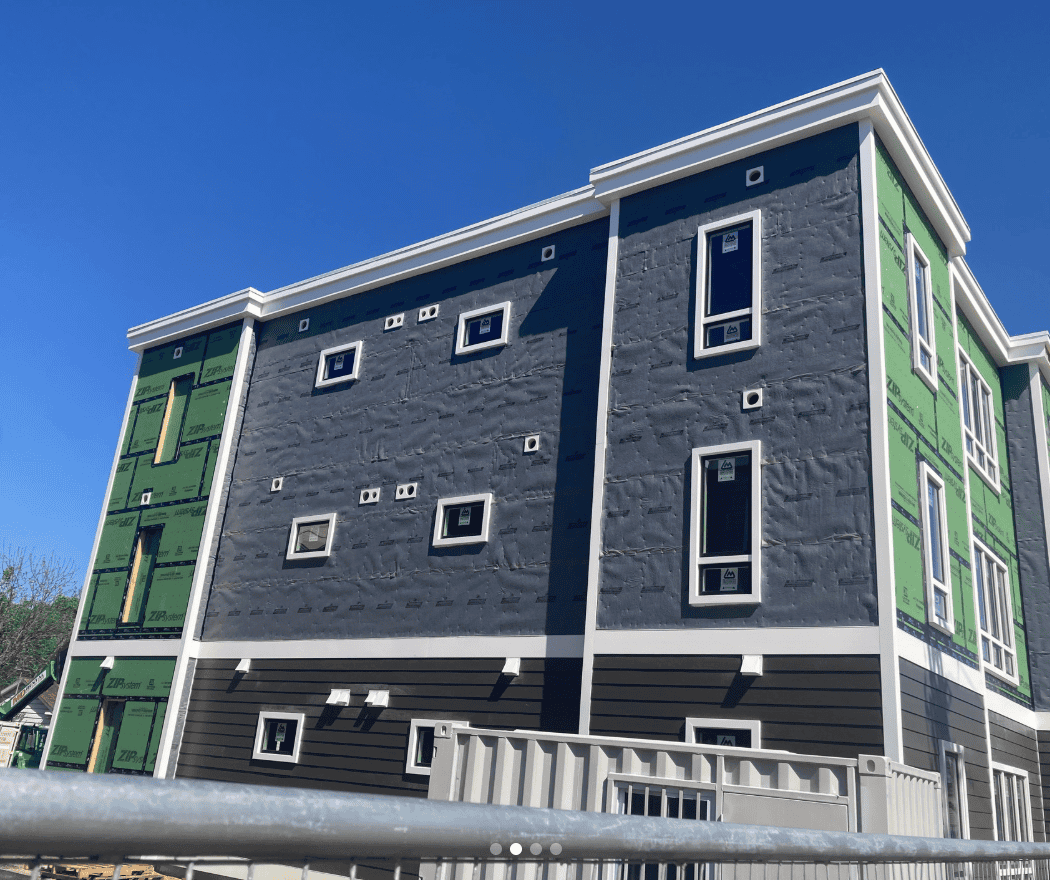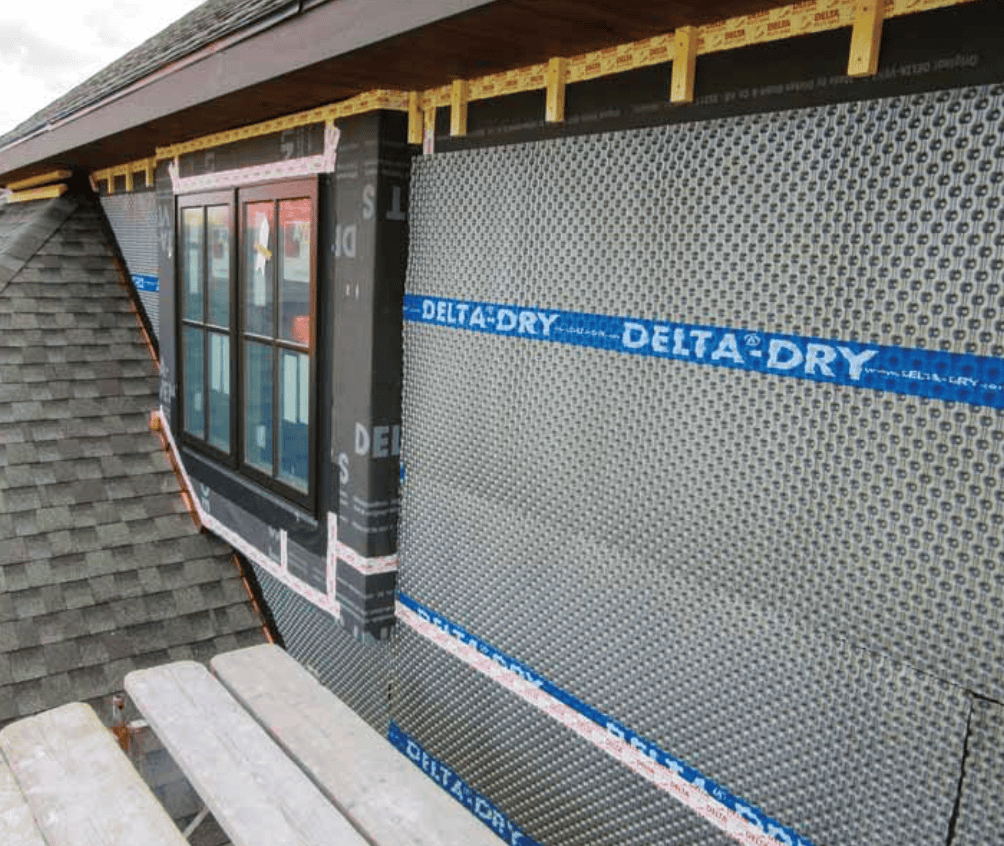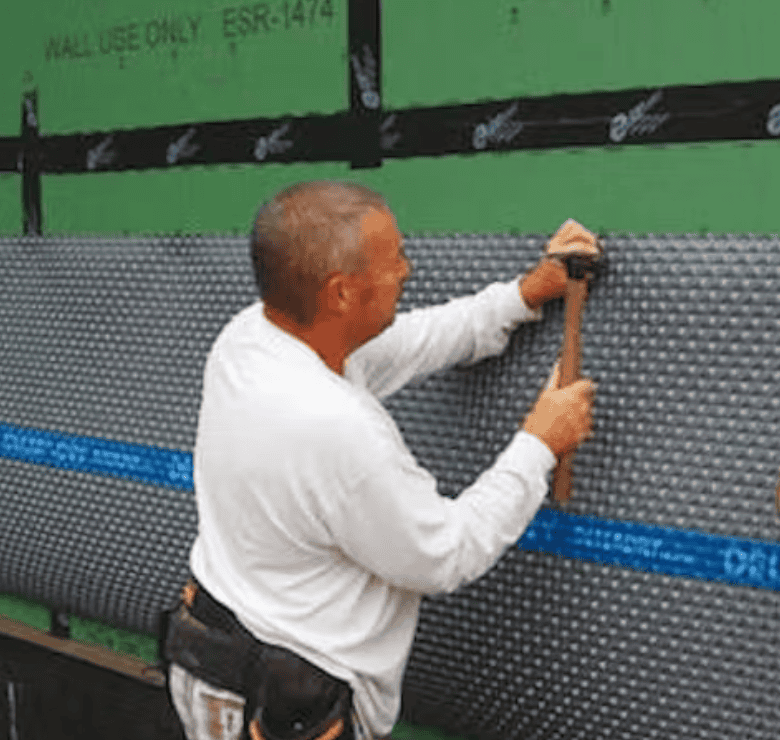Posted by Spycor Building on Oct 15th 2025

Protecting buildings from moisture damage is essential for long-term durability and energy efficiency. Rainscreen systems provide a proven solution by creating a ventilated gap that allows drainage and airflow, preventing issues like mold, rot, and structural decay. If you're a contractor, architect, or builder ready to invest in high-quality rainscreen products, this guide walks you through everything you need to know to make an informed purchase. From understanding key features to comparing top options, we'll help you choose rainscreen solutions that fit your specific needs, whether for residential homes or commercial structures.
What Is a Rainscreen System?
A rainscreen system is a building envelope component designed to manage moisture by separating the exterior cladding from the wall assembly. It consists of an outer layer (cladding), a ventilated air cavity, and an inner weather-resistant barrier. This setup allows water to drain away while promoting evaporation through airflow, reducing the risk of trapped moisture.
Rainscreen systems are commonly used in wall assemblies with materials like brick, stone, stucco, wood siding, vinyl, fiber cement, or metal panels. They are ideal for climates with heavy rainfall or high humidity, but their benefits extend to any region where weatherproofing is a priority. Unlike traditional direct-applied claddings, rainscreens add a layer of protection that enhances building performance.
Key components include:
- Drainage Plane: Channels water downward and out of the wall.
- Ventilation Gap: Allows air circulation to dry out any residual moisture.
- Attachment System: Secures the rainscreen without compromising the barrier.
By incorporating these elements, rainscreen systems comply with building codes like those from the International Building Code (IBC) for moisture control in exterior walls.
Benefits of Installing Rainscreen Products
Investing in rainscreen products offers multiple advantages that go beyond basic weather protection. These systems improve energy efficiency by reducing thermal bridging and allowing better insulation performance. For instance, a well-ventilated rainscreen can lower heating and cooling costs by up to 20% in some buildings, according to industry studies.
Durability is another major benefit. Rainscreens prevent water infiltration, which is a leading cause of premature cladding failure and costly repairs. In commercial applications, this means longer lifespans for facades, reducing maintenance expenses over time.
Additional perks include:
- Mold and Mildew Prevention: Airflow inhibits microbial growth.
- Enhanced Aesthetics: Supports a wide range of cladding materials without visible fasteners.
- Sustainability: Many rainscreen materials are recyclable and contribute to LEED certification points.
For builders focusing on high-performance envelopes, rainscreens are a smart choice that adds value to any project.

Types of Rainscreen Systems Available
Rainscreen systems come in various forms to suit different applications and budgets. Understanding the types helps you select the right one for your project.
- Drained and Ventilated Rainscreens: These feature open joints for maximum airflow and drainage. Ideal for high-moisture environments, they work well with stone veneer or brick walls.
- Pressure-Equalized Rainscreens: Designed to balance air pressure between the cavity and exterior, minimizing water penetration. Commonly used in high-rise commercial buildings.
- Mesh or Mat-Based Rainscreens: Made from entangled filaments or dimpled membranes, these provide a consistent gap. They are lightweight and easy to install, suitable for residential siding like fiber cement or vinyl.
Popular materials include polyethylene, polypropylene, or composite meshes, with thicknesses ranging from 3mm to 10mm for optimal ventilation.
When buying, consider compatibility with your cladding. For example, systems rated for stucco or cement board ensure seamless integration.
How to Choose the Right Rainscreen for
Your Project
Selecting the best rainscreen involves evaluating several factors to match your building's requirements.
First, assess the climate: In rainy areas, prioritize systems with superior drainage, like those with 6mm or thicker gaps. For coastal projects, opt for corrosion-resistant materials.
Next, consider the cladding type. Wood siding benefits from ventilated systems to prevent rot, while metal panels pair well with pressure-equalized options for wind resistance.
Budget plays a role too. Entry-level rainscreens start at $2-4 per square foot, while premium ventilated models can reach $6-8, offering better longevity.
Other considerations:
- Fire Ratings: Ensure compliance with NFPA 285 for non-combustible materials.
- Ease of Installation: Look for pre-cut rolls or panels that reduce labor time.
- Warranty: Top products offer 10-20 year guarantees against defects.
By focusing on these criteria, you can narrow down options to those that deliver the best return on investment.
Top Rainscreen Products: Expert
Recommendations
Based on performance, reliability, and user feedback, here are some standout rainscreen products that excel in moisture management.
DELTA®-DRY Rainscreen
Manufactured by Dörken Systems, the DELTA®-DRY is a dimpled membrane system made from high-density polyethylene. It creates a 10mm air gap for excellent drainage and ventilation, suitable for both residential and commercial walls.
Key features:
- Drainage Efficiency: Dual-sided dimples allow water to escape quickly.
- UV Resistance: Stable during construction exposure.
- Compatibility: Works with brick, stone, stucco, wood, vinyl, fiber cement, and more.
This product is ideal for projects requiring robust moisture control, with easy roll-out installation covering up to 500 square feet per roll.
Mortairvent® Rainscreen
From Advanced Building Products, the Mortairvent® series includes the 203 model, a 6mm thick entangled filament mat. It's designed for superior airflow, promoting rapid drying in wall cavities.
Highlights:
- Ventilation Rate: Provides over 90% open space for air movement.
- Durability: Crush-resistant and mold-proof.
- Applications: Perfect for siding materials like cement board, metal panels, or veneer.
Available in various widths, it's a versatile choice for contractors seeking cost-effective yet high-performing options.
Comparison of Top Rainscreen Products

This table highlights how each product addresses specific needs, helping you decide based on project demands.
Installation Best Practices for Rainscreen
Systems
Proper installation ensures your rainscreen performs as expected. Start by preparing the wall with a weather-resistant barrier, then attach the rainscreen material using approved fasteners.
Step-by-step guide:
- Surface Prep: Clean and level the substrate.
- Apply Barrier: Install a housewrap or fluid-applied membrane.
- Install Rainscreen: Roll out or panel-attach, overlapping seams by 6 inches.
- Add Cladding: Secure siding over the rainscreen, maintaining the air gap.
- Seal Edges: Use flashing at windows, doors, and base.
Tools needed include staples, screws, and tape for seams. Professional installation typically takes 1-2 days for a standard home facade.
Common mistakes to avoid: Overlapping incorrectly or compressing the gap, which reduces ventilation.
Cost Factors and ROI of Rainscreen Investments
Rainscreen systems add 5-10% to initial cladding costs but pay off through savings. Expect $2-8 per square foot, depending on material and scale. Bulk purchases for commercial projects can lower this to $1.50-5.
ROI comes from reduced repairs—moisture damage costs average $5,000-10,000 per incident—and energy savings of $200-500 annually per home.
This guide equips you with the knowledge to select and purchase the ideal rainscreen system. By prioritizing quality and compatibility, you'll safeguard your building against moisture while boosting efficiency.
Click Here to explore the best rainscreen solutions available today at SpycorBuilding.com and start your project with confidence.

FAQ: Common Questions About Buying
Rainscreen Systems
What makes a rainscreen system effective for moisture management?
An effective rainscreen features a drainage plane and ventilation gap that allow water to escape and air to circulate, preventing buildup behind the cladding.
Are rainscreen products suitable for all building types?
Yes, they work for residential homes, commercial offices, and high-rises, adapting to claddings like wood, stone, or metal.
How do I know if a rainscreen is compatible with my siding?
Check manufacturer specs; most support vinyl, fiber cement, brick, stucco, and more, with thickness options for custom fits.
What is the lifespan of a typical rainscreen product?
Quality rainscreens last 20-50 years, depending on material and exposure, with warranties covering defects.
Can rainscreens improve energy efficiency?
Absolutely; the air cavity reduces thermal bridging, potentially cutting energy bills by 10-20%.
Where can I buy reliable rainscreen systems?
Trusted suppliers offer products like DELTA®-DRY and Mortairvent®, ensuring code compliance and performance.


